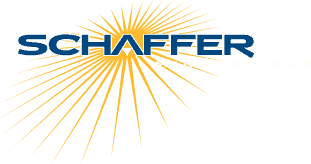Sourcing the metal fabrication that is involved in bringing a new product to market can be significantly more effective when an OEM goes beyond routine, cost-focused supplier quotes and holds out for a “big picture” production partner. Especially in terms of applying design-for-manufacturability expertise to turn a prototype-stage print into a well-planned production strategy.
The Schaffer Manufacturing collaboration with an OEM introducing a new product is an example. By being involved at the prototype stage – working back and forth with the OEM’s development team – Schaffer could propose design and engineering refinements that improved the product on multiple fronts.
For example, bringing manufacturability into the discussion early impacted outcomes like achieving critical tolerances and ensuring the durability required by severe-duty use in the field.
- Adjusting dimensions. Adding width to a cross member helped compensate for weld shrinkage, which is an element in bringing the work piece into tolerance. Over a distance of 40 inches on the 500-pound weldment, calculating shrinkage would be critical in holding tolerances for perpendicularity, flatness and parallelism.
- Modifying weld type. The print called for a bevel-type weld. But a J-groove would allow the weld puddle to get into the sharp angles better.
Taking a proactive approach to the print also enabled Schaffer to develop comprehensive strategy for the actual production.
- Logging weld temp readings. Starting with weld pre-heat temps and continuing with every weld bead interpass on each joint, high-tensile WELDOX® specifications required incorporating production systems to monitor and document temperature-range compliance.
- Handling bulky parts. Putting large, heavy weldments into the optimal position for a proper weld attack required special “positioner” equipment to easily rotate awkward-to-handle parts and keep the fitting process from increasing production time.
Holding a supplier accountable to play an R&D role in products that have never been manufactured can leverage the production floor to improve everything from quality and precision to cost avoidance and performance in the field.




